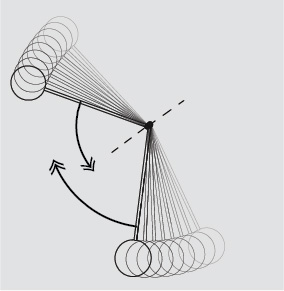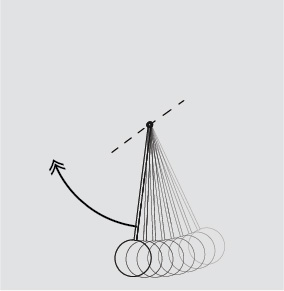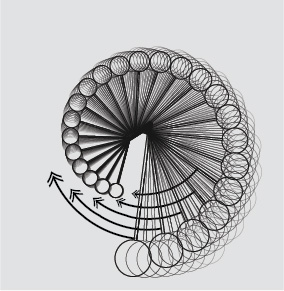
Image 2

Image 1
While pursuing my PhD in electrical engineering, I spent a lot of time studying wave phenomena. In my second year while working on a particular concept, I had an idea for a computer controlled machine that would help me visualize the phenomenon I was studying. I knew the machine would generate patterns as a byproduct, but after building it I saw that in addition to demonstrating the wave phenomenon it was capable of creating mesmerizing three-dimensional patterns I hadn't imagined.
Geometric patterns and sequences have always interested me, so having built this “wave machine” and seen the pattern creation it was capable of, I became fascinated with the possibilities inherent in this medium: using the precise coordinated timing of a computer to create a unique visual experience through the coordinated movement of a repeated simple object in real time. I began to identify an approach to creating and generating patterns based on this idea, and after completing my master’s degree I decided not to pursue the PhD any further, but to concentrate instead on designing and building pattern creation machines.
For the past several years I have been designing and building prototypes for several different kinds of pattern creation machines, applying for patents along the way. During that time, the scope of my machines grew to include interactivity, allowing viewers to interact with the machine by inputting and running their own patterns. And because there are an infinite number of different pattern possibilities, the potential for new and unexpected patterns is always there. Now that I have the entire machine design, from component simplicity and durability to associated programming, exactly where I want it, I build.
To better understand the inspiration for my work, it can be helpful to build a mental picture of one of my machines from scratch. First, visualize the motion of a single ball attached to one end of a long shaft, rotating about the shaft’s opposite end (Image 1). Try with your mind’s eye to see the ball spinning first in one direction and then the other; the mind can easily visualize and understand the unit’s simple movements.
Next, imagine adding a second unit to this system, spinning one clockwise and the other counterclockwise (Image 2). While most of us can still visualize this system, adding the second unit makes it a considerably more difficult mental exercise.

Image 2

Image 1
Now place a 3rd, 4th, 5th … unit in the system, allowing each one a different speed. Try to imagine what might happen, both just after the machine starts and after it has been spinning for a while. You can recognize that with just a few additional units it becomes staggeringly difficult to build a mental construct of the system and the complex patterns that evolve from the coordinated movements of the units. The individual units moving in concert continuously coalesce into patterns that the mind recognizes in the split second before they dissolve.

Image 3
I find it fascinating that given a basic unit with an elementary movement, the addition of even a few units make this system so complex and so full of visual surprises. This is at the heart of the machines elegance. Even the system's simplest patterns quickly advance to unexpected positions, revealing astonishing symmetries again and again. And we find the symmetries startling, even confusing, given that our minds espy the simplicity of both the system and the patterns.
I suspect that it is our inability to predict the visual experience that makes the installations so captivating.
For me at least, what really fascinates is that no matter how much I try to visualize or how many computer generated animations I produce, it requires a built machine to reveal all its fascinating qualities. From the system’s 3-dimensionality to its colors and shadows to its subtle sounds and wind currents, it never fails to engage in a unique and often mesmerizing way with every pattern it generates.
Knowing that the only way to fully experience a distinct system and the unique and beautiful patterns it presents is to stand in front it, there is no option but to build it.
Made with
HTML Code Generator